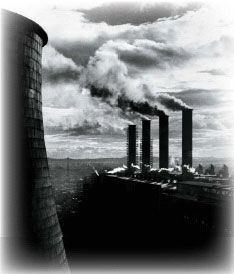Rebirth of the rust belt
Liaoning is very old, Liaoning is very young.
Liaoningers call their homeland "the first born of the People's Republic", having accounted for a disproportionately large share of the country's industrialization in the early years of New China. When market reforms started, the Northeastern province found itself burdened with a gigantic industrial base so outmoded and clunky that there was no way it could compete in a fast-moving market economy.
 The powerhouse turned into a rust belt, with massive layoffs and simmering restlessness. People felt they were left behind by a speeding train bound for prosperity. There was a whiff of despair in the air.
The powerhouse turned into a rust belt, with massive layoffs and simmering restlessness. People felt they were left behind by a speeding train bound for prosperity. There was a whiff of despair in the air.
Changes came slowly, but steadfastly. After a decade of restructuring, the industrial lion that used to roar licked its wounds, got back on its feet and began to prance in the wilds of a revitalized economy.
In the past two or three years, Liaoning has quickened the pace of its transformation. Resource-reliant industries went through makeovers and found their places in a better-aligned economic structure. Large expanses of slums were replaced with rows and rows of low-rise residential buildings in arguably the most ambitious affordable-housing project in the world. Families that lost all jobs were guaranteed at least one job, then offered job training to move up the competitive ladder.
A walk through an erstwhile coal mining shantytown like Fushun is like a walk through the time tunnel, ascending from the nadir of gloom up the slope of renewed hope. Liaoning is shedding its dust and regaining its youthful glitter by ridding itself of the shackles of the old system and becoming nimble again.
Liaoning's planners have realized that, with 2,000-plus km of coastline, the province has the natural advantage of an outward-oriented economy. With the size of Florida and the southern half essentially a bay and a peninsula that juts into the Bohai Sea and the Yellow Sea, it is ready to embrace globalization, yet is supported with industrial might in machinery, components and energy that extend well into the whole Northeastern region.
While the rust belt has been polished, a new splendor is taking shape. This time, it is a gold belt that shimmers and will link half a dozen hot spots along the coastline. Stretches of underutilized land, mostly in the outlying suburbs of existing cities, are being prepared for development, including a lineup of new ports. In the words of Li Keqiang, CPC Party Secretary of the province, this new belt, known as "Five Points Along One Line", is designed to sustain the livelihood of the Liaoning people for the next few decades.
People first
For a long while, industrial strength had little to do with how people conducted their lives. They dug for coal; they tempered steel; they made cutting machines; and they were housed in Soviet-style dormitory blocks. "Liaoningers were quick to be content," said many an official. "They just needed something to get by."
However, economic restructuring, which was necessary for healthy growth, left millions in dire poverty. For them, a GDP hike is not only irrelevant, but almost ironic.
The policy to reach out to those most in need of help is the result of swelling government coffers and humanitarian attention to the nitty-gritty of the bottom of the social strata. This may sound like a clich, but credit should be given to those visionaries who have eschewed token acts of patronizing benevolence, but taken concrete, painful and systematic measures to make things happen.
A typical portrait of an old Liaoninger may be the sooty face of a coal miner or the sweaty face of a steel worker. When his whole family lost their iron-rice bowl, his eyes deadened with desolation. Now there is a glint of anticipation. "Hope is alive again even though change has come a bit late for our generation," said 73-year-old Jiao Fugong, a resident of Xindi community in Fushun.
This gives rise to the portrait of a new Liaoninger: a teenager with an 85 percent chance of getting into college, an overseas educated youth who opts to return to his home province to launch his career, a farmer whose small business minted an overnight millionaire because his hometown has morphed into a boomtown, or an engineer who designs state-of-the-art software with global application.
Liaoningers have a self-deprecating humor, evident in the indigenous form of comedy known as "two-person act". They like to describe themselves as sha da hei cu, literally dense, big, dark and unrefined, qualities associated with traditional heavy industries.
But don't be fooled by this self-depiction because it is more of a defense mechanism now. Underneath the voracious drinking and folksy banter, there lies a sensitivity toward new trends and a determination to catapult to the forefront of China's economic locomotive. Just like performers of the local revue, who impersonate the most technically demanding singers, carry out a variety of physical stunts, and engage in nonchalant repartee all at the same time, the province of 42.7 million people is capable of multitasking that weaves extreme difficulties, boundless optimism and the boldest visions into a harmonious tapestry.
This is a place that the world had better take notice... now.
 |
(China Daily 06/28/2007 page25)














